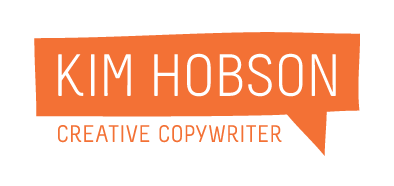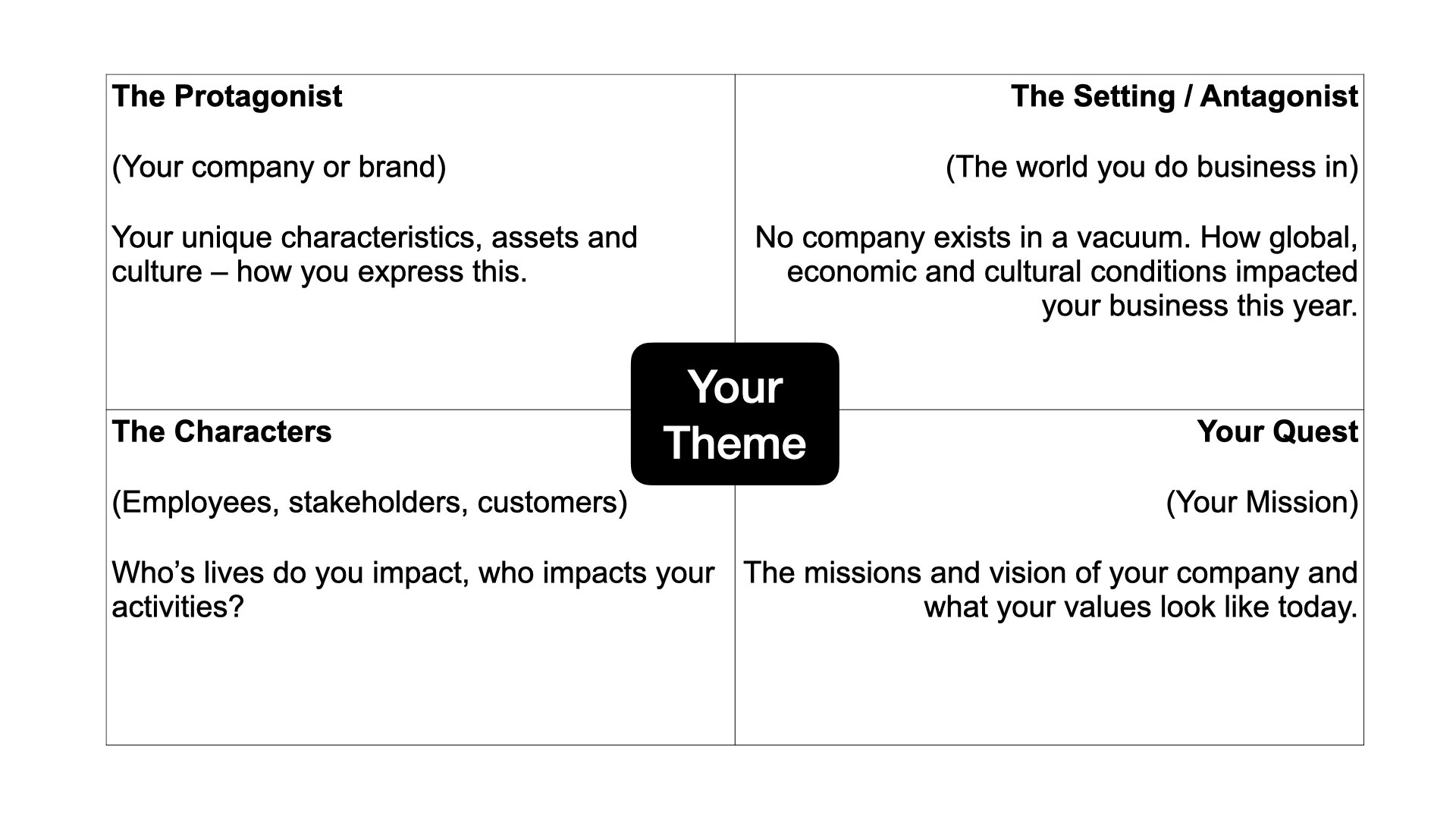Whether you’re preparing for your annual report, want to write a commemorative book to mark a special occasion or creating a coffee table book to give as a gift to stakeholders and customers, your annual report needs a theme.
In this article, I’m going to explain how you can elevate the impact of your report using a theme, the principles of incorporating storytelling to make it more engaging and give you a tool you can use to find your own theme.
The result? A cohesive, impactful and memorable annual report that’s a valuable marketing tool, not just an annual exercise.
Why Does Your Annual Report Need a Theme?
While an annual report is an opportunity to tell stakeholders what happened over the past year, many fall short because rather than presenting a cohesive document, it feels like standalone sections smashed together with a lot of data and not much story.
Done right, an annual report is not only an exercise conducted once a year, but a valuable marketing asset you can use to further your narrative as a company and build a greater connection with stakeholders, investors and employees.
What Is An Annual Report Theme?
Your theme is a thread of an idea that is intertwined and repeated throughout your annual report’s pages. It delivers a narrative and story, which, as we know, is much more likely to stay in the minds of readers than facts and data alone.
While your theme will depend upon your industry and be unique to your company and mission, it’s possible to find a theme for any annual report or commemorative book you write.
5 Benefits of Having an Annual Report Theme
Impact
By finding a theme for your annual report, you can make a bold and catchy statement. Annual reports with a theme are more likely to stay in the minds of your readers.
Focus
A lot happens in a year. A theme helps increase the focus of your report on the most compelling events, milestones and achievements. Doing so helps you create a more informative report that connects with and inspires your readership.
Logical Flow
A theme will help you determine and articulate the key messages of your report. That makes it easier to give it a logical and compelling structure and supports the copywriting process in terms of the language, phrases and focus.
Boosts Readability
A theme is also useful to inspire the use of captions, quotes, interviews, images as well as any design such as infographics. It can also inspire the overall visual theme of your report’s design.
Communicates Future Objectives.
There’s no reason your annual report should be out of date as soon as you hit print or send. Not just a reflection of the past and what has happened, a theme is also a reflection of future objectives, the wider narrative you’re telling as a company and what you strive to achieve in the coming years.
Use Your Annual Report Theme To Help You Leverage Storytelling for Impact
Just as our favourite books have themes running through them, having one for your annual report will help you to tell a great story.
Storytelling is one of the most powerful tools at your disposal when writing an annual report (or in the arsenal of your annual report copywriter). Storytelling allows you to really emphasise and drive home the impact your organisation is having and spread the word on your mission and work - bringing it all together in a cohesive narrative for a greater and longer-lasting impact.
Not to mention that stories stay in the minds of readers much more than facts and figures and one of the most effective ways to influence, inspire and share ideas.
How to Find Your Annual Report Theme and Tell Your Story
While your annual report may not be a work of fiction, you can still use storytelling principles to your benefit. Every story has a few key elements driving the narrative. By figuring out the key elements of your story you can extract the key themes that arise and hone in on yours.
Storytelling For Your Annual Report:
The Protagonist: Your company or brand
The Setting: The market or world you operate in
Antagonist/ Conflict: Challenges you came up against, shortcomings in the business that can be improved.
The Characters: Such as stakeholders, employees or customers
Your “Quest”: Your company’s overarching mission or goal
To find your theme, you can use a theme finding template to explore and examine the key elements of your story this year and see what elements arise.
This storytelling system is predominantly used to find the overarching story of a brand or business. But by honing in a specific time period – in the cases of most annual reports or commemorative books, it’s a year – the template is a useful and successful tool to help you discover your annual report theme.
Theme Finding Template
Drawn from Ty Montague’s True Story Method.
Let’s Look at an Example of How we Might Use This Template
Let’s say you’re an automotive brand writing an annual report.
The first step is to explore each of four sections of the theme finding template one by one by focusing on the previous year. Consider some of the following questions:
The Setting and antagonist (the world we do business in and challenges we face)
What global events are impacting our work this year? - What has changed, are there new opportunities or challenges we faced?
How is advancing technology having an impact now and in the future? What are we preparing for or adapting to this year. Did our priorities change?
How do cultural events in society affect the world in which we do business?
What is our competition doing? How do we push ourselves to compete this year or respond to stay competitive?
The Protagonist (Your Company or Brand)
What is our USP, what makes us different from other car companies?
What is unique about our attributes or skills, or IP do we possess? How have these helped us this year?
What is unique about our values or company culture? How have we lived these enduring values throughout the year?
The Characters (Employees, Stakeholders, Customer)
Who participates in our story and how?
How have the needs of customers influenced us this year or how have we respond?
How have our products, services or offerings impacted their lives this year?
Your Quest (your mission and values)
What drives and motivates us? How have we furthered our goals this year?
What does the ideal tomorrow look like? What stage are we at this year?
What impact do we want to have on our industry? how have we done this throughout the year?
What values are unwavering in our day-to-day business?
Respond to these questions and fill in each box – the Protagonist, The Setting and Antagonist, The Characters, Your Quest.
Continuing our example, our exploration for the automotive annual book might look like this:
Our Themes
As we’re filling in the boxes, you should begin to see themes emerge. Here are a couple of examples to help you get the picture:
Theme of rapid transformation
This year, a number of global events accelerated changes and conversations that were already beginning to impact in our industry - remote work, automation, EVs. Throughout the year these events have impacted all areas of our work and we responded and evolved at a rapid rate. However, in times of change what remains steadfast is our commitment to our founding principles which continue to guide us as a company.
Theme of new responsibility
Societal issues have come to the forefront this year more than ever. While charities and organisations are important, our customers and wider society expects us to be a force for positive sustainable change. It is no longer good enough to operate as simply a “business”. This year our story continues to move beyond cars, to incorporating sustainability as our business model.
As you explore your themes, I recommend you narrow it down to around 4 key themes. The next step is to fine tune and tweak each theme before honing in on the one that resonates most.
When you have your theme, the next step is to write a catchy title that summarises the theme in a short but effective tagline (or get an annual report copywriter to do this for you!).
From your theme and each aspect of the completed theme finding template, you should be able to develop a blueprint for the chapters, the content for each and key messages.
I hope you found this guide to finding your annual report theme useful. If you’re looking for an annual report copywriter, take a look at my annual report writing services and samples, or get in touch to talk about your project.
About Kim Hobson
Kim is a Freelance Creative Copywriter based in Hong Kong. She helps brands communicate more effectively with words that hook minds and persuade people to take action. She also runs The Freelancer Newsletter, a weekly email helping freelancers to up their careers and grow their businesses.







Freelancing is known for its unpredictability. Sooner or later, you’ll have to deal with freelance client loss. But rather than let it get you down, here are my tips on bouncing back and making your freelance business even better.